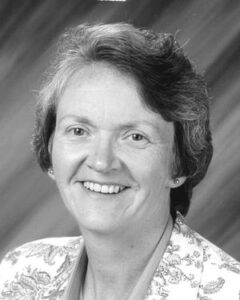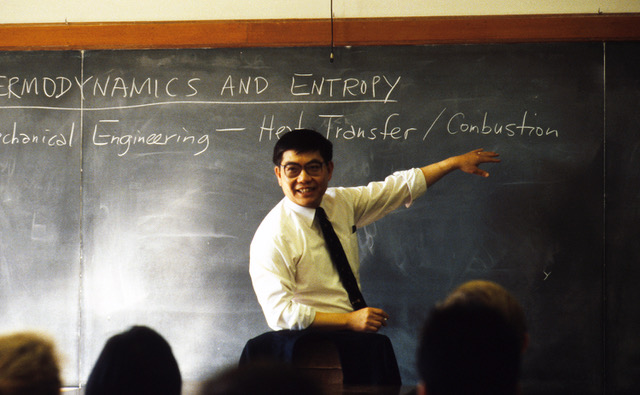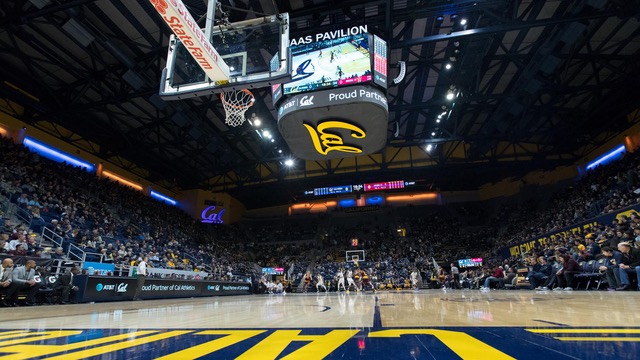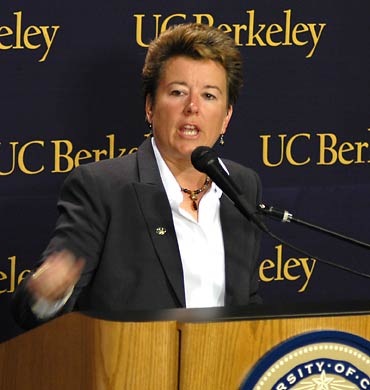By William Cooke
The last fifty years might be considered the modern era of intercollegiate athletics management in the United States. Ballooning TV contracts and Title IX have changed the college athletics landscape forever. The growing pains associated with those changes were felt by everyone involved with college sports, including those at UC Berkeley. The Oral History Center’s project, Oral Histories on the Management of Intercollegiate Athletics at UC Berkeley: 1960–2014, offers cross-sections of the Cal Athletics world during those formative years in the form of interviews with key internal and external actors.
For college sports fans, the history of the management of collegiate athletics at UC Berkeley is a familiar one. The unending conflict between maintaining a solid academic reputation and fostering winning programs, funding dilemmas, NCAA sanctions and the challenges surrounding gender inclusion in sports — common issues for every university athletic department — are all included in UC Berkeley’s storied athletics history.
These tensions and developments are reflected in the UC Berkeley Oral History Center’s project, Oral Histories on the Management of Intercollegiate Athletics at UC Berkeley: 1960–2014. Interviews between former UC Berkeley Associate Chancellor John Cummins — who served as interviewer — and a diverse cross sampling of individuals involved in the management of intercollegiate athletics, including athletic directors, chancellors, donors, and senior administrators, make up this collection of 45 publicly released interviews.
Organized by decade, here are a few snippets of the voices represented in this collection of oral histories. Themes in this collection include but are not limited to funding dilemmas, controversies surrounding academic standards for student-athletes, the evolving relationship between women’s and men’s sports, and the sometimes incompatible interests of athletic boosters and University officials.
The 1970s: The beginning of the modern era — Dave Maggard and Luella Lilly
The 40s and 50s were the golden years of Cal football and basketball. Led by legendary head coach Lynn “Pappy” Waldorf, Cal’s football program made three Rose Bowl appearances between 1948 and 1950. In 1959, head basketball coach Pete Newell led Cal to the program’s lone national championship to date.
A relatively disappointing decade followed for both programs. Then, in the early 1970s, catastrophe. When the NCAA found out that football and track athlete Isaac Curtis had failed to take the SAT as required, the intercollegiate governing body came down hard with sanctions.
Dave Maggard, who was appointed Athletic Director in 1972, argued against those in the administration and around Cal Athletics who wanted to fight the sanctions. These included the Golden Bear Athletic Association, an independent booster organization that had sued the NCAA in response to the sanctions. According to Maggard in his oral history:
When I became the athletic director I went to the administration and said, “This is a huge mistake. You cannot fight these people. We need to work to get on the inside, we need to get on committees, we need to be a part of the NCAA. I will tell you that they will rip this place apart, and this is something that you will never win. You will never win.”
The sanctions included probation and four years of bowl game ineligibility, a blow to the revenue stream of Cal’s most profitable program. Thanks to Maggard’s cooperation with the NCAA, though, the sanctions were eventually lifted.

At the same time, intercollegiate athletics at UC Berkeley took a huge step towards achieving gender equity in sports at the University. Following the passage of Title IX in 1972, the University hired its first director of Women’s Intercollegiate Athletics, Luella “Lue” Lilly.
Generating revenue for women’s athletics was a difficult undertaking. But Lilly made it a priority and found creative ways to raise funds and boost support for the newly established programs. Those efforts included the recruitment of a local politician and an Olympic gold medalist.
Then one time when we had— Dianne Feinstein and Ann Curtis were going to help us with the Mercedes raffle that we were giving out… We went over in front of city hall, and we just drove. We looked to see what was going to make the best picture, and there was a fountain behind it. We just drove the thing right up on the sidewalk.
If the 1970s was an era of immense change in athletics management at UC Berkeley, the next two decades would see the University settle its position on the relative importance of athletics and academics.
The 1980s and 1990s: The balance between school and sports — Chancellors Ira Michael Heyman, Chang-Lin Tien
When Chancellor Ira Michael Heyman took the reins from Albert Bowker in 1980, he inherited a sound athletics fundraising plan that Maggard had developed the decade prior. In many ways, Heyman supported the success of athletics at Cal, going so far as to allow “Blue Chip Admits” — 20 student athletes per year who would not normally be eligible to attend UC Berkeley.

But even while supporting athletic success at the calculated expense of lower academic standards, Heyman did not avoid criticism from UC Berkeley athletics boosters:
So they [The Grid Club] kept pushing me. “How important is athletics to you in relation to academics?” et cetera, et cetera. And I essentially said, “Academics, they’re really important. And intercollegiate athletics are of importance.” I just tried to make that distinction. And they said, “Well, on an index of one to ten where do athletics stand?” And I said, “Oh, about seven. Six and a half or seven.” That group never really warmed up to me.
In the early 1990s, Earl “Budd” Cheit, who served as the dean of the Haas School of Business, Executive Vice Chancellor and Interim Athletic Director over the course of his time at UC Berkeley, found himself right in the middle of that ongoing tension between winning and maintaining the University’s reputation for being first and foremost an elite academic institution.
Head football coach Bruce Snyder had led the Bears to a 10-2 season and a trip to the Citrus Bowl in 1991. Arizona State University doubled UC Berkeley’s annual salary offer of $250,000 to recruit Snyder.

Long-time supporter of UC Berkeley athletics Walter “Wally” Haas offered to match ASU’s offer along with the help of other boosters. But when Cheit relayed Haas’s message to Chancellor Chang-Lin Tien, the Chancellor shot the idea down and explained his reasoning.
Wally Haas called me during this time, and he said, “There are a number of people, myself included, who will come up with the money to match what he’s being offered. Will the Chancellor go for that?” And I called Chang-Lin and talked to him. And Chang-Lin said, “I can’t justify paying a coach that much more than the highest-paid professor on the campus.”
The 21st century: Changing priorities — Robert Berdahl, Robert Birgeneau
The 80s and 90s saw proponents of academic integrity and responsible spending win out over those who wanted Cal Athletics to accept the national shift toward a culture of commercialism in intercollegiate sports. The potential to rake in huge revenues from TV deals by investing in “revenue athletes” — student-athletes on the football and men’s basketball teams — drove the impetus to sacrifice academic standards for athletic success.

The hiring of Athletic Director Steven Gladstone in 2001 marked the beginning of a short, half-hearted effort to spend money in order to make money. Under Gladstone’s direction, coaching and administrative salaries were increased to attract and retain the very best in the intercollegiate athletics industry, all in the hope of making the two revenue sports — Cal football and men’s basketball — into elite college programs.
But with higher spending came concerns about the growing athletics budget deficit, which was compounded by the ever-growing cost of the newly built Haas Pavilion. In his interview with Cummins, Robert Berdahl, UC Berkeley’s Chancellor between 1997 and 2004, attributes some of the blame for deficit spending on the 1991 Smelser Report, which called for broad-based, highly competitive athletic programs in spite of budget constraints.
I think that the Smelser Report was a real disservice, because it created in the donor and booster community the notion we’re going to be as excellent in athletics as we are in academics, which I think is an unrealistic expectation for any high-quality university. I don’t think there’s any university of high quality that has that aspiration. Maybe Stanford, maybe Stanford’s the only one that does… But they don’t—they are competitive in football and basketball but rarely go to the Rose Bowl or to the NCAA championship.

Robert Birgeneau, who succeeded Berdahl as Chancellor, saw to it that priorities change under his leadership. To the dismay of some donors, Birgeneau replaced Gladstone with Athletic Director Sandy Barbour in 2004. During her tenure, Barbour facilitated the creation of the University Athletics Board (UAB), a committee that included faculty members and student athletes. Its purpose was to increase transparency in athletics spending by sharing this information with faculty for the very first time.
The Great Recession of 2008 made budget constraints even tighter. In 2010, Birgeneau made the difficult and controversial decision to cut four athletics programs — baseball, men’s and women’s gymnastics, and women’s lacrosse — and make rugby a club sport.
Because we had such loyal supporters of [Division] IA sports, I felt that they needed to know that the financial situation really was quite dire and that we needed them to step up, both themselves personally and to organize fundraising campaigns. As I said, that just simply did not happen… So, in this fateful September meeting, after the cold hard financial facts were presented to me, I agreed with the financial and IA people, that there really was not any choice. Specifically, we were never going to be able to achieve our goal of $5-million-a-year support from the campus without eliminating sports.
Supporters of those four sports eventually raised a combined $20 million in order to restore them to Division I status.
We worked out a compromise, basically asking each sport to raise enough funds to close their operating gaps for the next five to seven years… The baseball supporters raised nearly $10 million in six weeks. It is notable that philanthropy to baseball had been negligible for many, many years, and so there was a qualitative change. Indeed, this funding crisis brought the baseball community together, and in fact has resulted in us now having a stadium with lights at night. Thus, for baseball the situation actually is markedly improved.
These quotes represent just a small fraction of what this collection has to offer. Researchers will also find information on intra-departmental relationships, the personal experiences of former administrators in regards to particular decisions, and the retrospective opinions of both external and internal actors in the most crucial formative decades in the history of intercollegiate athletics management, both at UC Berkeley and institutions across the country.
Find these interviews and all our oral histories from the search feature on our home page. You can search by name, keyword, and several other criteria.
William Cooke is a fourth-year undergraduate student majoring in Political Science and minoring in History. In addition to working as a student editor for the Oral History Center, he is a reporter in the Sports department at UC Berkeley’s independent student newspaper, The Daily Californian.
Related Resources from The Bancroft Library
In addition to these oral histories, The Bancroft Library has related sources on Cal Athletics and intercollegiate athletics management more generally, including books on athletics facilities and fundraising, department records, and newspaper articles.
Read “Title IX in Practice: How Title IX Affected Women’s Athletics at UC Berkeley and Beyond,” also by William Cooke.
Related oral histories include Brutus Hamilton, Student athletics and the voluntary discipline : oral history transcript / and related material, 1966-1967 and Peter F. Newell, UC Berkeley athletics and a life in basketball.
66 years on the California gridiron, 1882-1948; the history of football at the University of California. Brodie, S. Dan. 1949. Bancroft BANC F870.A96 B7
A celebration of excellence : 25 years of Cal women’s athletics. Compiled by Kevin Lilley, Lisa Iancin, and Chris Downey. UC Archives Folio ; 308m.p415.c.2001.
Pamphlets on athletics in California. Bancroft Pamphlet Double Folio ; pff F870.A96 P16.
About the Oral History Center
The Oral History Center of The Bancroft Library preserves voices of people from all walks of life, with varying political perspectives, national origins, and ethnic backgrounds. We are committed to open access and our oral histories and interpretive materials are available online at no cost to scholars and the public. Sign up for our monthly newsletter featuring think pieces, new releases, podcasts, Q&As, and everything oral history. Access the most recent articles from our home page.